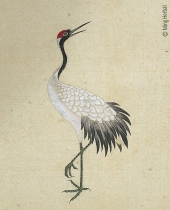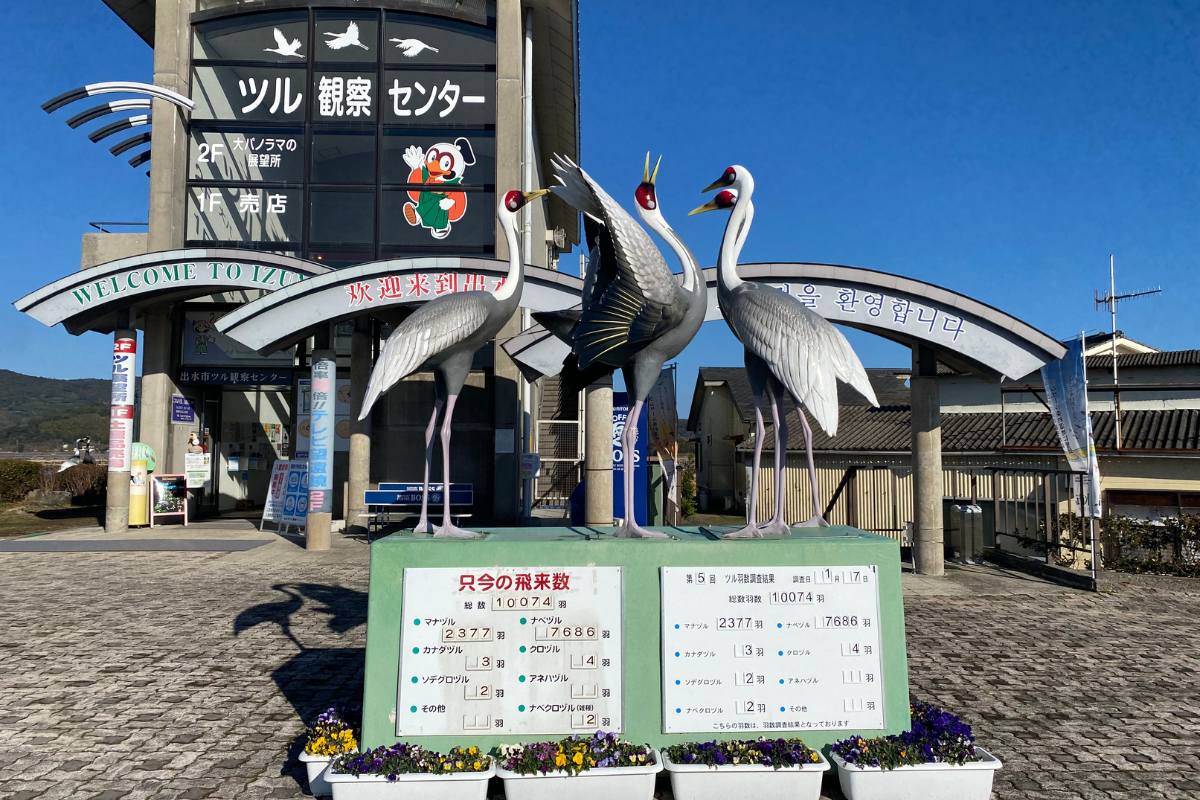
The Izumi Crane Center is the focus of crane-watching on Kyushu (Photo by: Justin Peter)
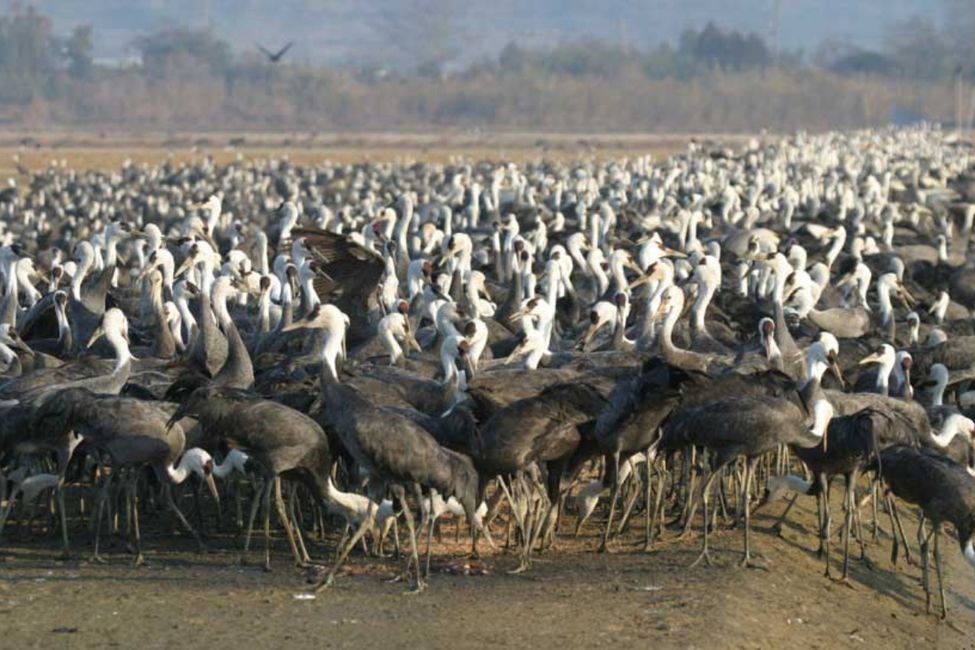

The Hooded Crane comes by the thousands to Izumi (Photo by: M. Brazil)
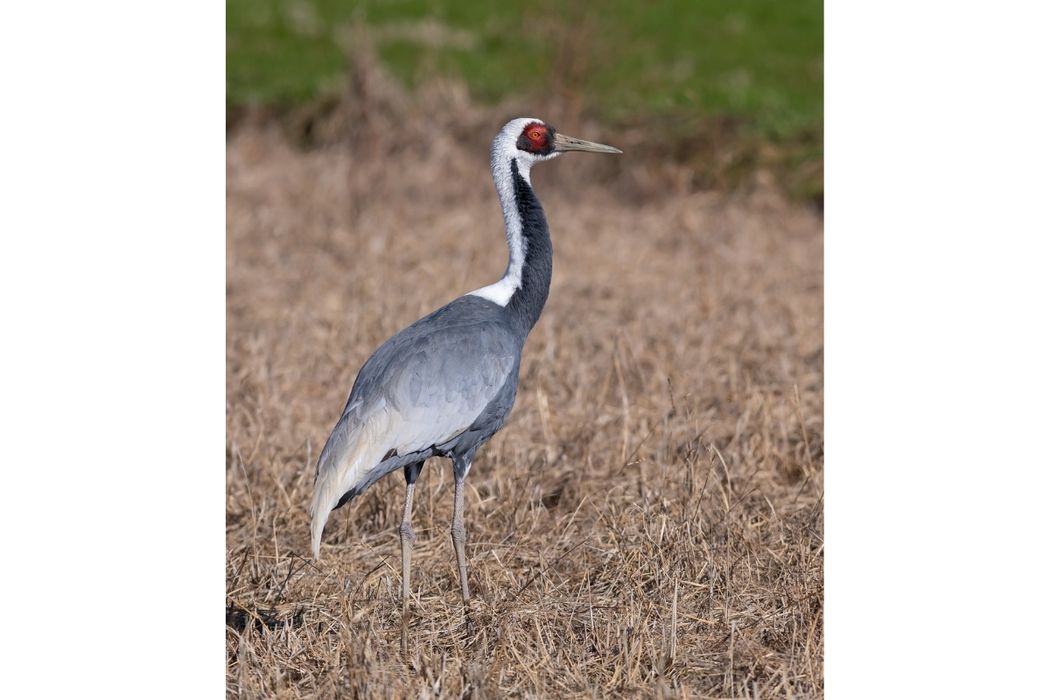

The White-naped Crane overwinters in smaller but still good numbers (Photo by: Justin Peter)
There might be small numbers of a couple of other crane species with them too; however, what made this a most special year was a super-rarity that was also on Kyushu. Just a couple of weeks earlier, a single Siberian Crane had been spotted feeding with other crane species in the fields. This tall, snow-white bird with peculiar red face was vaguely reminiscent of the rare Whooping Crane of North America, but more extensively white. It also much harder to see for the average North American! The Siberian Crane breeds in the remote taiga of Siberia but was for centuries best known from India, where it had been recorded overwintering for centuries. In fact, it was depicted by a court painter of Jahangir, Moghul Emperor of India (and father of the builder of Taj Mahal) as early as around 1625.
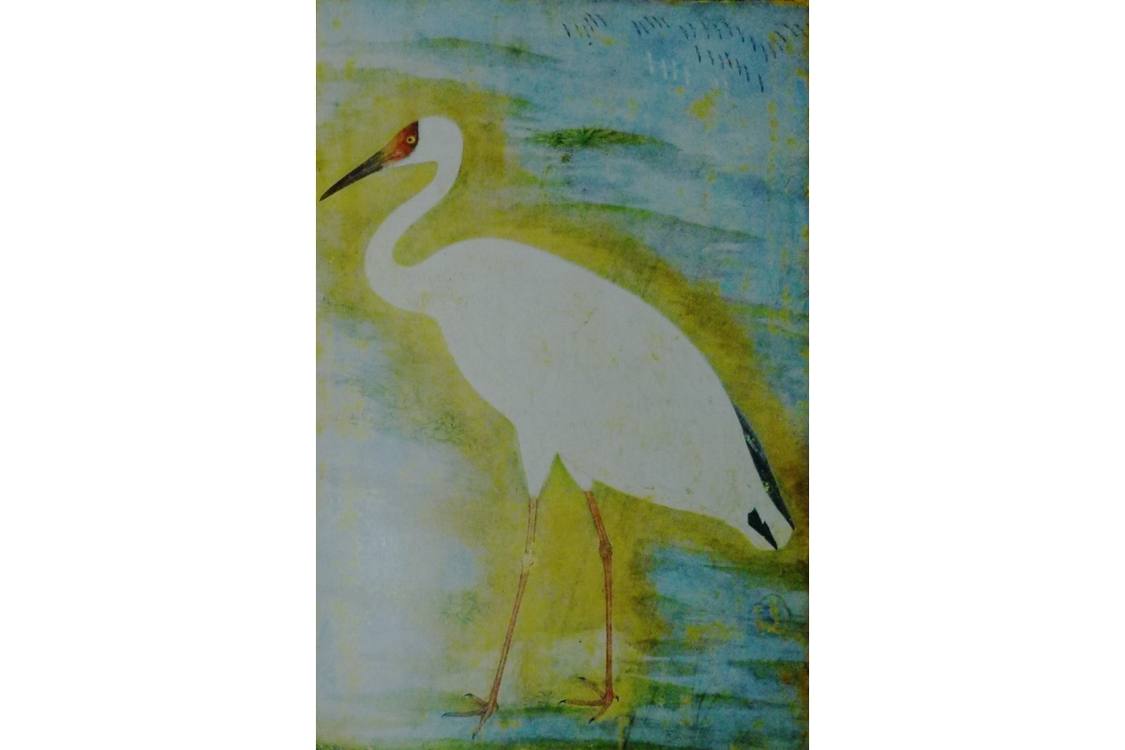 Siberian Crane painting from India, early 17th century (Painting by: Ustad Mansur)
Siberian Crane painting from India, early 17th century (Painting by: Ustad Mansur)

From hundreds in India, though, its overwintering numbers dwindled until about 20 years ago when it ceased to make an appearance – at all – at the usual overwintering spot which anyone could go to in order to see them. Were they in trouble? Where did they go? Concerns were somewhat alleviated when the bulk of the world’s population was discovered overwintering in China in 1980, but in quite a remote interior location. Siberian Cranes only appeared in very small numbers away from that site.
In Japan, usually single birds might be seen, and only sporadically, every few years. Luckily for us, this year happened to be one of those years. Our driver brought us to the general area where the bird was seen just a couple of days earlier. It had been hanging out with Hooded Cranes and White-naped Cranes. In stature, it was very much like the latter, so we would have to scan all the cranes. We had been driving on a side road and just turned onto a large throughway when I spotted it across a fallow field – and it was impossible to miss even at good distance! A tall, all-white bird beside a couple of White-naped Cranes! Excitement set in and our bus driver responded by turning off the busy road onto another side-road without traffic. We stopped to watch intently. The cranes were all foraging. After a couple of minutes of watching them from a considerable distance (and no photos on our part), the Siberian Crane flew away alone for no obvious reason while the other cranes remained. We could see it land again but at much greater distance from us and then out of view. We were already happy just to have seen it. Could we see it closer, however? A winding unpaved road led to the general area where the crane landed, so we took it, but only as far as we did not make the bird nervous (my greatest fear as an observer watching any rare animal is that we might frighten it). We set off and the bus crawled along the winding road, and eventually our bird of interest came into plain and close view, right beside some Hooded Cranes!
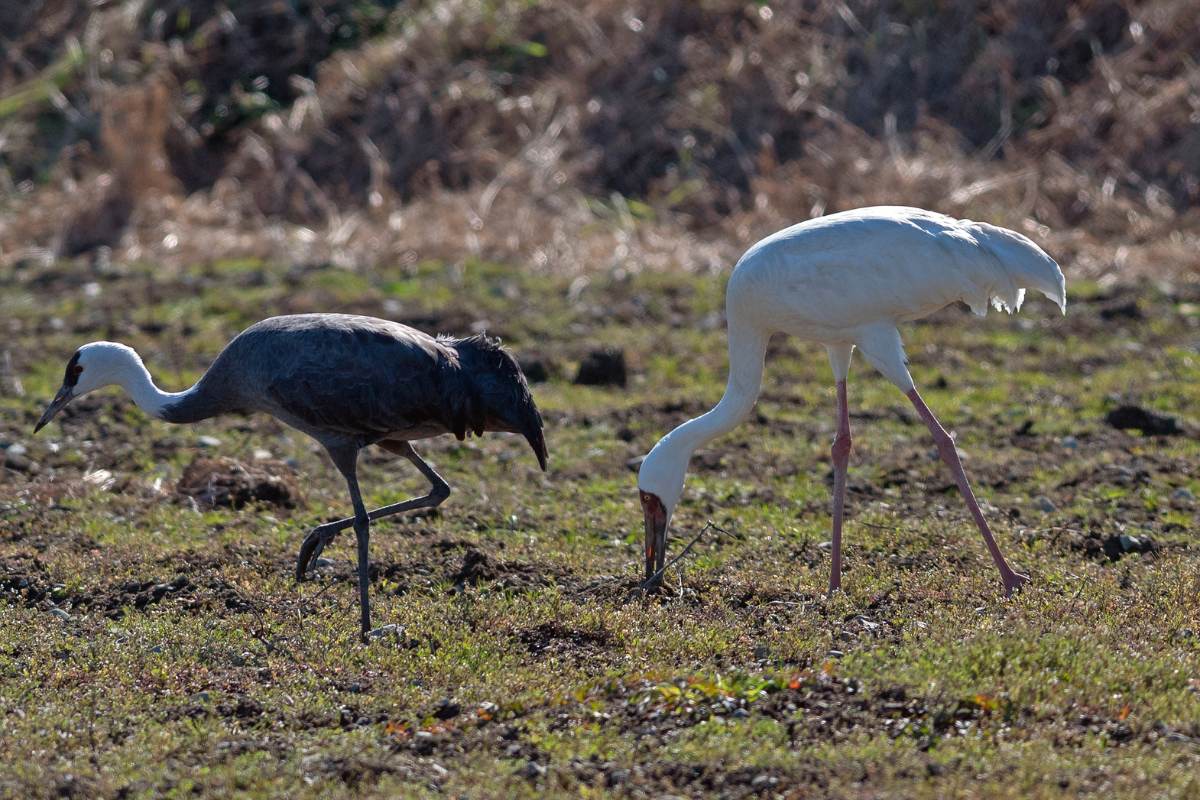
In Japan, usually single birds might be seen, and only sporadically, every few years. Luckily for us, this year happened to be one of those years. Our driver brought us to the general area where the bird was seen just a couple of days earlier. It had been hanging out with Hooded Cranes and White-naped Cranes. In stature, it was very much like the latter, so we would have to scan all the cranes. We had been driving on a side road and just turned onto a large throughway when I spotted it across a fallow field – and it was impossible to miss even at good distance! A tall, all-white bird beside a couple of White-naped Cranes! Excitement set in and our bus driver responded by turning off the busy road onto another side-road without traffic. We stopped to watch intently. The cranes were all foraging. After a couple of minutes of watching them from a considerable distance (and no photos on our part), the Siberian Crane flew away alone for no obvious reason while the other cranes remained. We could see it land again but at much greater distance from us and then out of view. We were already happy just to have seen it. Could we see it closer, however? A winding unpaved road led to the general area where the crane landed, so we took it, but only as far as we did not make the bird nervous (my greatest fear as an observer watching any rare animal is that we might frighten it). We set off and the bus crawled along the winding road, and eventually our bird of interest came into plain and close view, right beside some Hooded Cranes!

The lone Siberian Crane feeding alongside a Hooded Crane (Photo by: Justin Peter)
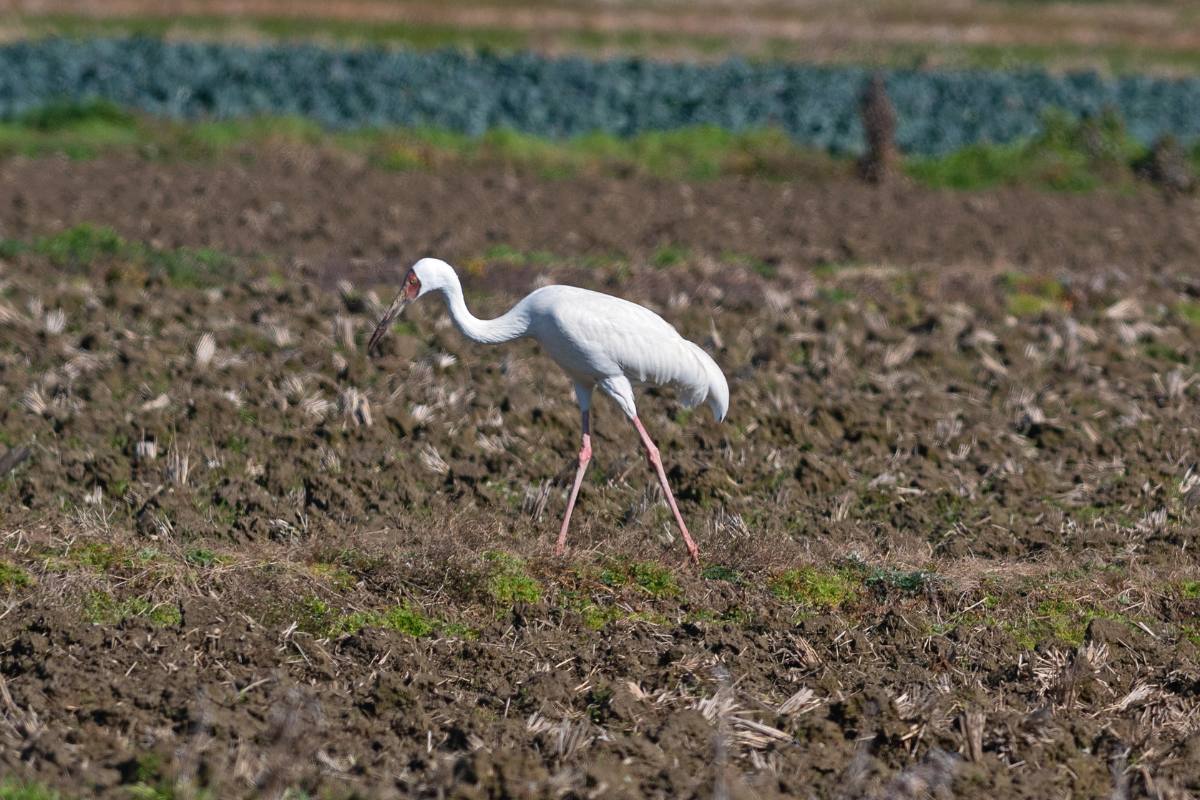
All of the cranes periodically scanned the environs but they continued feeding.
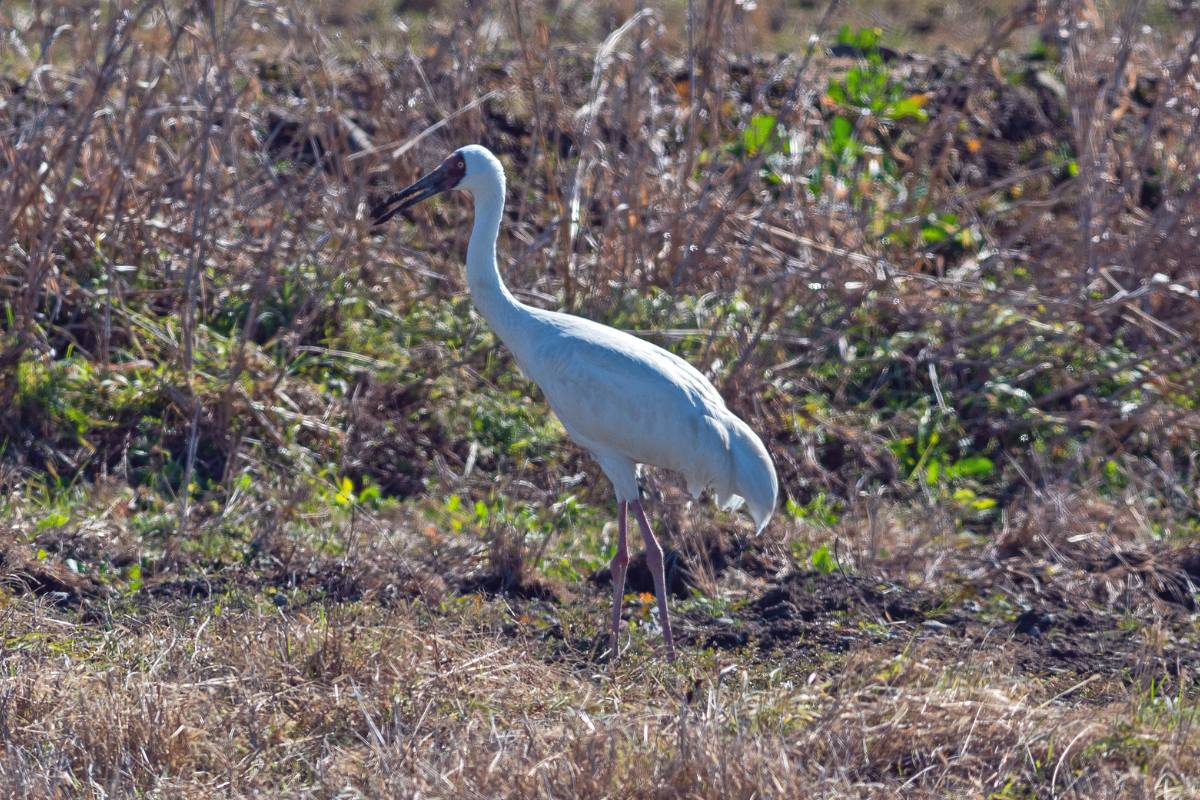
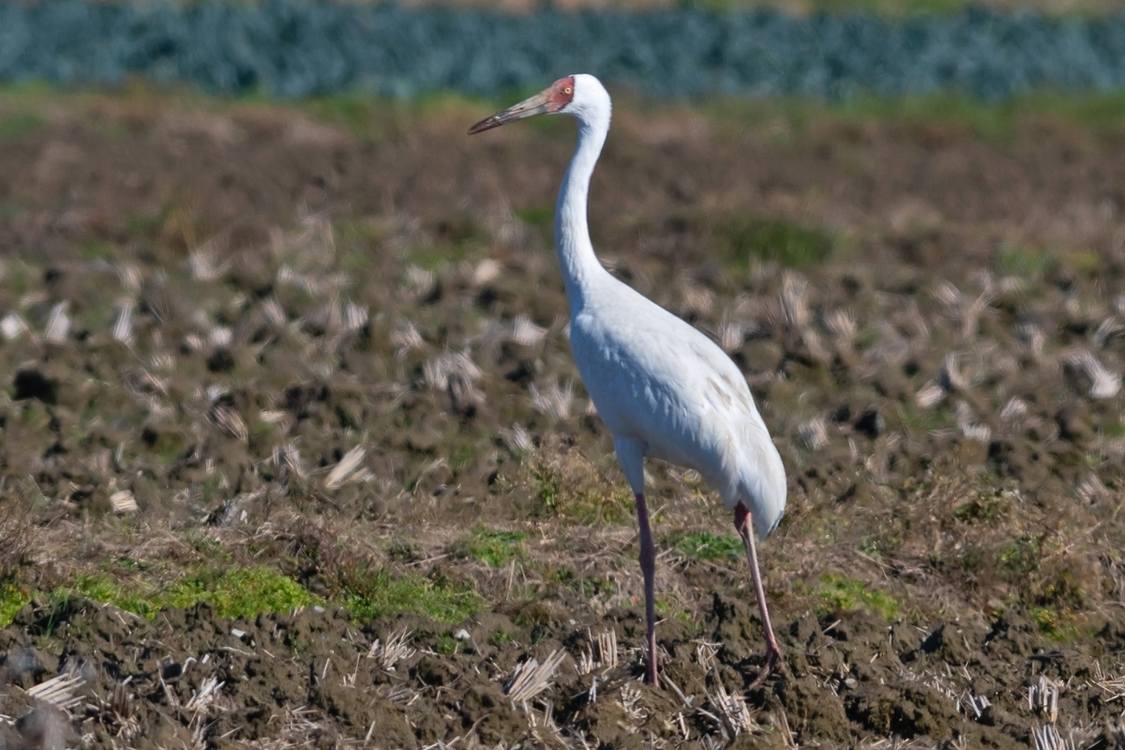
The Siberian Crane inspects its environment before it resumed feeding (Photo by: Justin Peter) 
The crane’s bill was smeared with soil from probing deeply in the ground. In winter, Siberian Cranes feed mainly on roots, bulbs tubers and suchlike items.
(Photo by: Justin Peter)
(Photo by: Justin Peter)
We watched for about 20 minutes. The Siberian fed in one plot, then flew onto a higher plot and resumed feeding.


(Photo by: Justin Peter)
When I was a 10-year-old visiting India, our family drove by the reserve close to the Taj Mahal where the Siberian Cranes overwintered but we did not go into the reserve due to lack of time. They would disappear from India before my next visit, and so I never thought I would see one in my lifetime! It may be some time yet before any of us see a Siberian Crane again, so we were thankful for this rare opportunity. Cranes are a special group of birds, beautiful in appearance and movement, and especially memorable owing to their bugling vocalizations.
While we can’t guarantee we’ll see this crane again, we are confident there will be lots of cranes in Japan next winter on our Japan in Winter tour…and we will keep our fingers crossed for another Siberian Crane. Please click here to learn more.
While we can’t guarantee we’ll see this crane again, we are confident there will be lots of cranes in Japan next winter on our Japan in Winter tour…and we will keep our fingers crossed for another Siberian Crane. Please click here to learn more.


